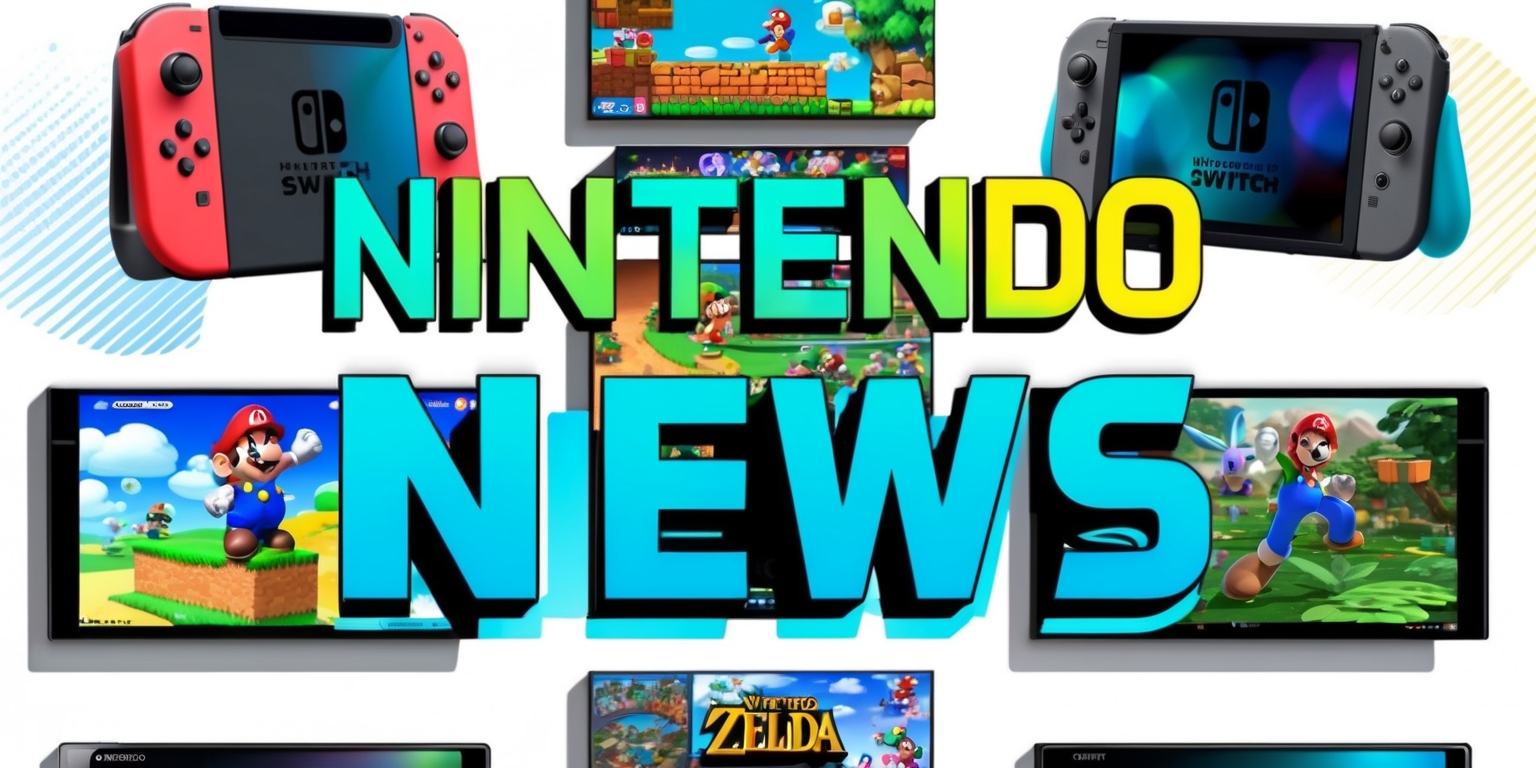Next-Generation Console: A Global Exploration of Price, Performance, and Legacy
Apr-18-2025

The arrival of the new console has sparked excitement and a flurry of discussion among longtime fans and newcomers alike. With enthusiasm running high, many are examining every detail from the price tag to the technical advancements that set this model apart. The buzz centers not only on the improved hardware but also on how pricing and regional variations compare to its predecessor. Consumers have begun planning their budgets while evaluating various aspects of the console, including its versatility for both casual and dedicated gaming sessions. Experimental offers and innovative bundles further spice up the conversation as enthusiasts prepare for a new era of gaming. Diverse pricing strategies and potential variations over different markets have only added to the intrigue, leaving many eager to learn what awaits them.
Pricing Structure and Market Positioning
The cost of the new console demonstrates Nintendo’s commitment to delivering a premium gaming experience. Priced at $449.99, £395.99, or €469.99 at launch, the console is positioned as a high-end alternative in the market. This pricing reflects not only enhanced performance but also the promise of advanced capabilities and broader gameplay features. Despite the noticeable increase compared to the previous model, the premium price is justified by a larger, more immersive system that offers deeper engagement with both classic and new releases. In addition, the strategy behind pricing caters to a wide spectrum of markets with fluctuations in currency exchange and regional taxes influencing the final retail price. Each price point speaks to a balance between innovation and keeping the product accessible to a global audience.
Global Variations and Regional Economics
Differences in pricing across international markets add another layer of complexity to the console's release. While North American and European audiences see prices in familiar dollar, pound, and euro denominations, other regions have their own considerations. In countries like Australia, for instance, currency conversion and import logistics slightly adjust the price, making it marginally lower than expected. Moreover, Nordic areas display noticeable variation where enthusiastic gamers might even cross borders in search of better deals. These regional differences can be a reflection of local economic conditions, tariffs, and shipping expenses. Such factors underline how global commerce influences even the most beloved gaming franchises, ensuring that regional markets are met with pricing structures that reflect both economic realities and consumer expectations.
Software Pricing Dynamics and Game Offerings
The conversation shifts from hardware to the spectrum of game titles available on the new system, revealing a strategic approach to game pricing. First-party releases adopt a premium price, often reflective of extensive development and brand strength, with titles such as Mario Kart World fetching a physical copy price in the upper range. Yet, the digital market presents a slightly softer pricing landscape where many titles appear more affordable. Beyond flagship software, a variety of third-party releases, indie games, and remastered classics round out the game library. These diverse offerings allow consumers to explore new gaming horizons without feeling restricted by cost. The layered pricing approach ensures that whether one seeks exclusive Nintendo experiences or ventures into other genres, there is a gaming option that fits an array of budgets and tastes.
Comparison to the Previous Generation

When contrasting the new console with its predecessor, the differences in both pricing and performance become unmistakable. The previous model, with its lower price point of around $299.99, £259.99, or €299.99, presents a stark contrast to the advanced but higher-priced model. The new system’s enhanced hardware and design improvements naturally command a premium. Despite the increase in cost by approximately $150 or its equivalent in other currencies, many fans see it as a fair trade-off. While the original model will continue to serve a large fan base, the upgrade to the new console offers additional features that are well-aligned with modern gaming demands. The evolution in pricing mirrors the progression in technology, ensuring that users have a choice reflective of their aspirations and budgets.
Influences of International Tariffs and Shipping Considerations
The global economics surrounding import tariffs and shipping logistics have also impacted the pricing discussion of the console. Recent tariff hikes on products from several manufacturing hubs have temporarily delayed pre-orders in certain locales, for example, the United States and Canada. Even as tariffs are paused for a period on many countries, these international trade factors add an element of unpredictability. Buyers in regions with higher tariffs may see the final price fluctuating in the near future. Such regulatory influences showcase the intricate dance between global trade policies and consumer electronics pricing. Shoppers and retailers alike keep a close watch on these developments as even a modest percentage adjustment can have significant consequences on the affordability and accessibility of new gaming technology worldwide.
Exploring Hardware and Aesthetic Enhancements
Beyond cost analysis, a deeper examination of the new console reveals striking improvements in both functionality and aesthetic design. The console boasts expanded physical features, including a larger, more responsive display and refined ergonomic design. Its modern build seamlessly marries performance with style, ensuring that the unit is It combines state-of-the-art technology with a captivating, eye-catching design. The upgraded interface promises to deliver smoother navigation and enhanced interactivity, aligning with the evolving demands of digital gameplay. These aesthetic and functional upgrades contribute to an engaging user experience, distinguishing the new model from its predecessor. The attention to detail in design and user-centric features underscores Nintendo's dedication to providing a console that caters to contemporary tastes while ensuring lasting durability and appeal.
Bundled Offerings and Special Editions
Accompanying the console's launch is a variety of bundled offers and special editions designed to entice different segments of the market. Alongside the standard console, premium bundles such as the Mario Kart World set elevate the gaming experience with exclusive features at a slightly higher price point. These bundles often include access to extra digital content, game upgrades, and sometimes limited-edition accessories that boosts both its visual allure and practical functionality value of the system. Whether it is a collector’s edition or an upgrade pack for a beloved franchise, these packages provide gamers with a pathway to customize their experience while taking advantage of special pricing options. The strategic inclusion of such specialized packages reinforces the versatility of the console, ensuring that each bundle addresses a unique preference among the diverse gaming community.
Software Upgrades and Evolution in Game Experience
The ecosystem surrounding the console extends further with initiatives to upgrade existing game libraries. Several titles are set to transition into updated editions, compatible with both the new hardware and the established software realm of the earlier console. Owners of select games on the previous platform are provided with upgrade options—often at a modest cost—for enhanced features and graphics improvements. This move not only honours long-term fans but also fosters a seamless bridge between generations. Emphasis is placed on preserving the legacy of iconic titles while pushing the boundaries of modern gameplay with refined visuals and interactive dynamics. It is a forward-thinking approach intended to harmonize the past with new technological achievements, ensuring that cherished series adapt smoothly to a next-generation framework.
Backward Compatibility and User Accessibility
One particularly enticing aspect of the new version is… console is its backward compatibility with a vast library of titles previously available on its predecessor. This feature allows gamers to continue enjoying a broad spectrum of games, making it an attractive option for those reluctant to part with their existing investments. While the new hardware undeniably offers advanced performance, the assurance of support for legacy titles provides continuity and comfort to long-term users. Maintaining such compatibility illustrates a thoughtful strategy designed to evolve the brand without alienating its established audience. The commitment to preserving a seamless gaming experience means that fans can transition between generations with minimal disruption, underscoring Nintendo's dedication to a user-friendly environment where both innovation and tradition are given equal importance.
User Considerations and Budgeting Strategies
As potential buyers deliberate over the new console's purchase, several factors play into the decision-making process. Budgeting strategies are influenced not only by the initial price tag but also by the expected future expenditures on game titles, accessories, and potential bundled deals. For consumers weighing the benefits, the new model represents a blend of enhanced hardware capabilities and a rich game library that spans both innovative releases and beloved classics. Although some individuals might perceive the upfront expense as a drawback, hurdle, the promise of a comprehensive entertainment system and long-term game support makes the investment appealing. Retailers and enthusiasts alike emphasize the importance of understanding the full ecosystem surrounding the console, inviting prospective users to calculate not just the upfront expense, but also the evolving value of an integrated gaming experience.







